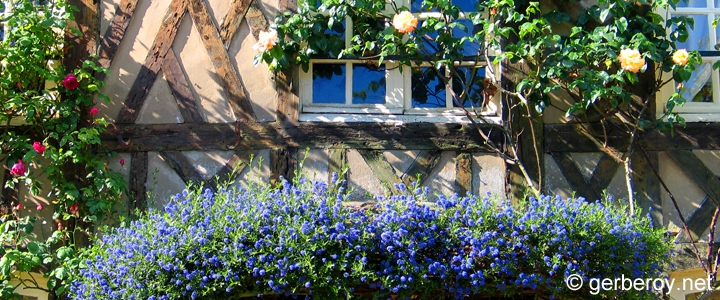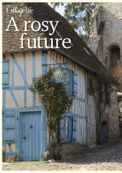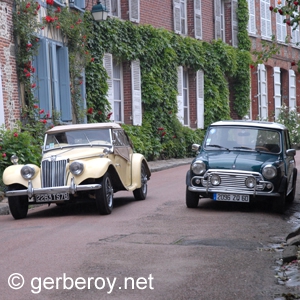USA - 2013




GETTING THERE
Take Autoroute 16, exit at Beauvais Nord. Take the D901 towards Marseille-en-Beauvaisis, pick up the D133, direction Songeons. Just before Songeons, follow the D930. Free parking at the Porte Notre-Dame.
HAT TO DO
La Musée de Gerberoy, Hotel de Ville, weekend afternoons.
Collégiale Sainte-Pierre, open daily
Fête des Roses, third weekend in June.
Jardins Henri Le Sidaner
www.lesjardinshenrilesidaner.fr
WHERE TO EAT IN GERBEROY
Ambassade de Picardie. Danièle et Jean-Pierre His will make you welcome at their Restaurant and Salon de Thé.
Rosemary Brown Stanton
The "village of roses" continues to be admired and frequented by artists. Despite its postcard-prettiness, Gerberoy's charm seems uncontrived. The "city" and its 115 inhabitants appear surprised by the admiration it attracts. Go and see for yourself -- especially while the roses are in bloom in the spring and summer.
Today, the city -- Gerberoy & endash; is one of the "140 most beautiful villages in France" and protected as a classified site.
Ghosts of Gerberoy's celebrated past surround you in its architecture, ramparts, and street names recounting visits by kings including William the Conqueror and Henri IV. A melange of styles and centuries, the houses bear witness to the last 500 years. Stroll under the ramparts and up the wooden staircase to the hilltop... and a panorama of Le Sidaner's private garden. The nearby rue du Chateau will take you to the 15th century collègiale (don't miss the Aubusson tapestries inside).
Once one of the more powerful, and now the smallest city in France, Gerberoy's status is reflected in its handsome Hotel de Ville, now a local museum including Le Sidaner momentos. Information, postcards, and posters of the artist's works, are available. In the marketplace below, you'll find a map of footpaths in the neighboring Forêt de Domaniale de Caumont &endash; well worth a wander.
In Gerberoy, you can appreciate what you don't see almost as much as what you do see. No telephone or electricity wires, no billboards, no shops except for Monsieur Fäy's antiques and ceramics, no traffic lights. The only "attraction" requiring a fee is the village well which lights up for a franc to display its 60-meter depth.
Once upon a time there was a walled city in Northern France famous across the land. Many a battle was fought here and by the end of the Hundred Years War, its chateau lay in ruins. Weakened further by a plague and fire, the city slept for centuries until an artist, enchanted by its cobbled streets and storybook houses, brought it back to life. He adorned it with roses and transformed the chateau remains into an exquisite garden. That was 1901 and the artist was the post-impressionist Henri Le Sidaner.
This beautiful medieval village, one of France's prettiest, is lined by timber-framed houses and flower-strewn balconies. For many years a frontier town between the duchy of France and the Norman duchy, it has a castle dating back to 922 and its streets were once paced by the English King and Norman duke, William the Conqueror, 1079.
Welcome
Village classé parmi "les plus beaux villages de France"
Oise, Picardie, France
Gerberoy


© gerberoy.net 1998-2020